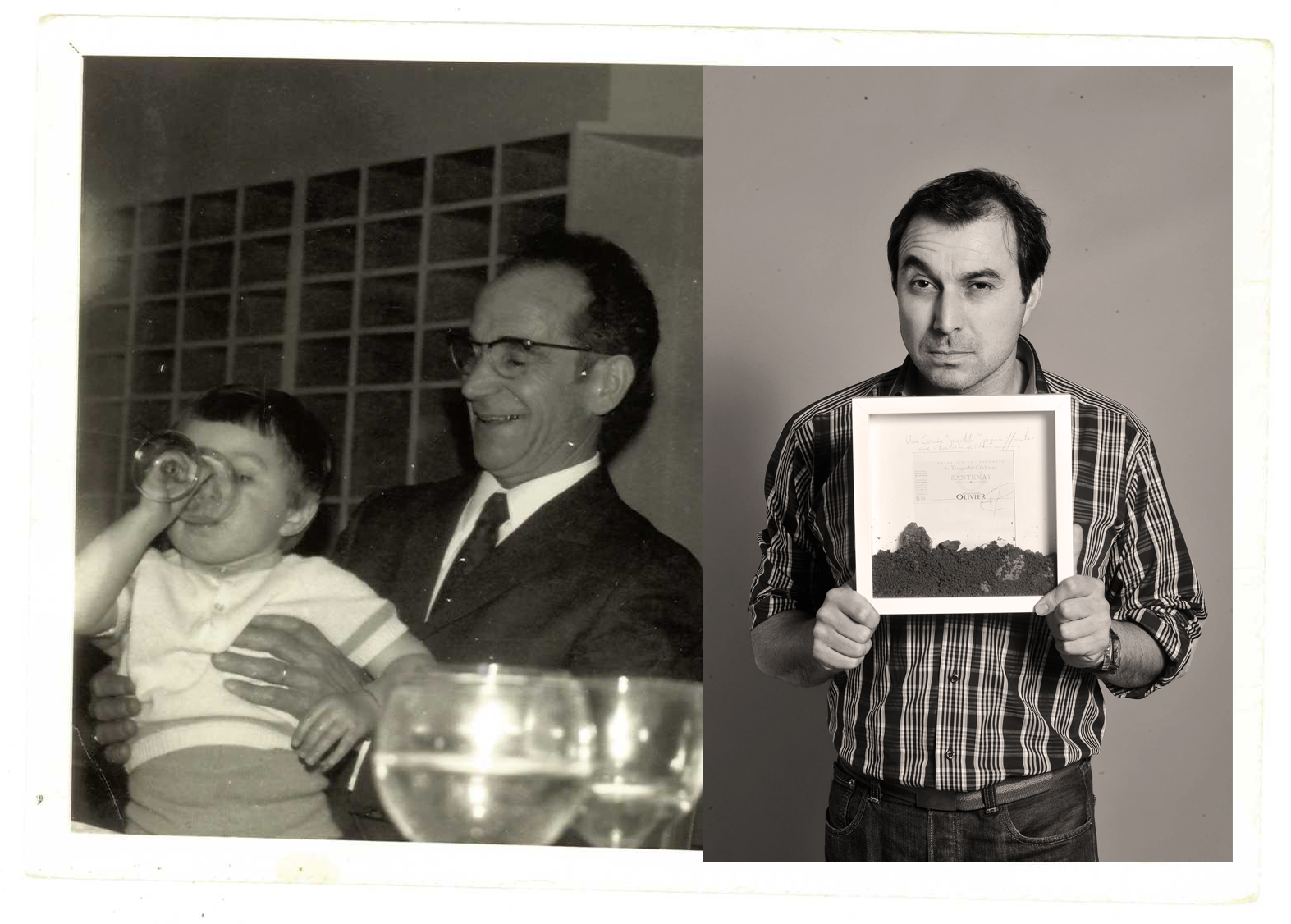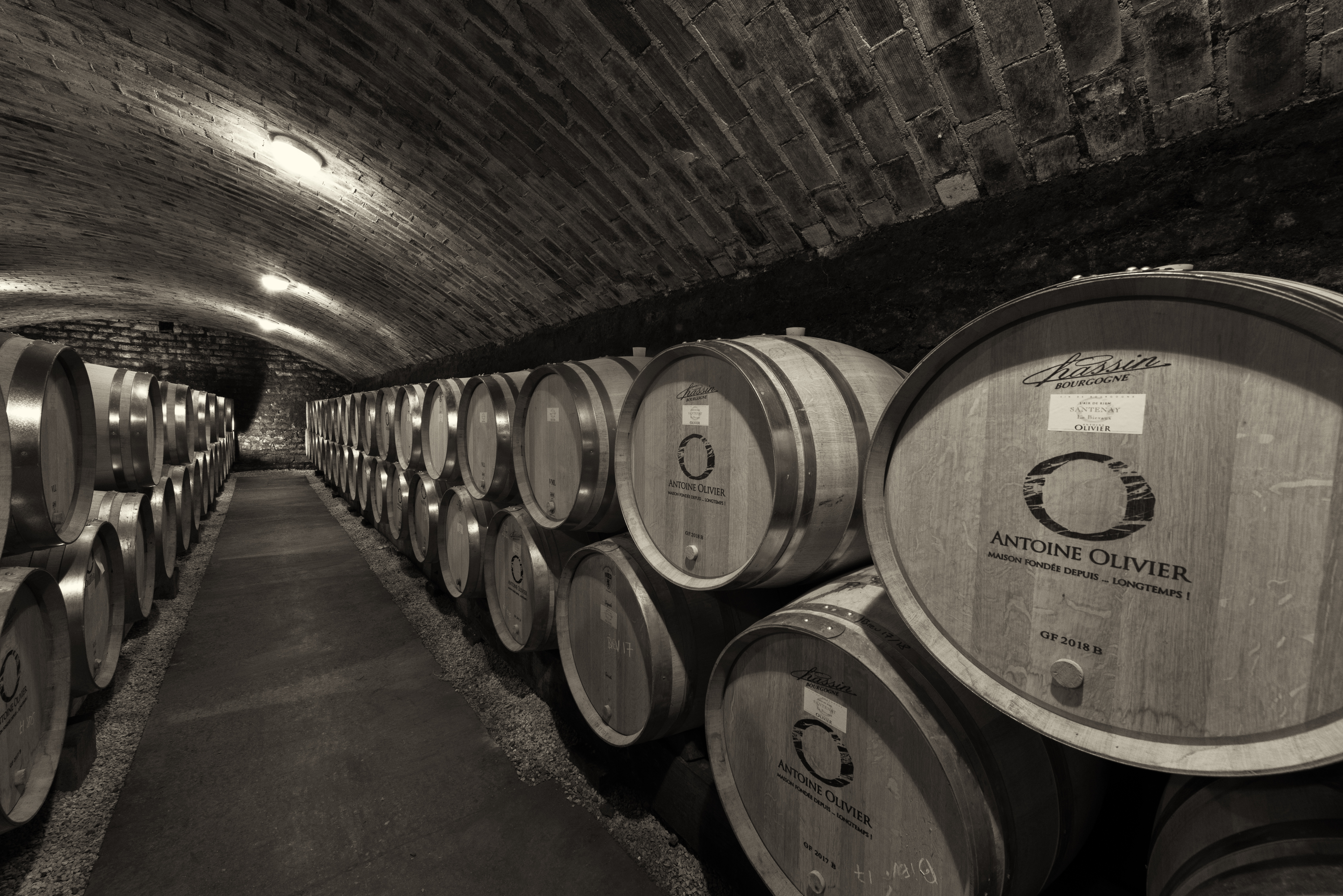Origin & History
The Olivier vineyard was established at the end of the 60s. Antoine Moreau-Chevalier left a few vines to his grandson, Hervé who was my father.
The purchase of various land parcels and subsequent new plantings the domain has grown to include land in the cities of Santenay, Savigny, Pommard . and most recently around Rully.
During the growth of the winery, we have maintained our care for the old soils which were long esteemed for production of the Santenay Blanc.
Some of these had been abandoned for over a century, and our wines have since earned the title of Grand Vins de Bourgogne ( great white wines of Burgundy). Our vineyard is the main producer of the Santenay Blanc (white wine)
I replaced my father in 2003 in all domains. I have committed to respect my convictions as a winemaker: the taste for work well-done all the while keeping a sense of humour as can be seen in some of vintages. Come and discover my passion through these vintages. Here, Chardonnay and Pinot Noir are ever prevalent, the environment is prized, and we enjoy life to the fullest.
My hope is that you enjoy tasting my wines as much as I’ve enjoyed creating them !

There are just over 40 years between the time the two photos were taken… seems like I was predestined for this !
(on the left : on my grandfather’s lap, on the right…here I am today)
In the vineyard
During the whole process, from our vineyard to your glass, we continually search for the highest quality and pleasure. I don’t seek perfection; I’ll leave that to others. The first steps to ensure a whine’s quality is respecting the soil and the environment. For several years, I have opted to forego any synthetic products, pesticides and weed killers. While this approach has a label, I have chosen not to apply for this certification. Therefore, I am prevented from using it. My objective is to highlight the soils, to respect the environment, and to leave a healthy legacy.
Ploughing is my preferred method of taking care of the soil to ensure the best synergy between plant and the earth. Between November and March, the plant is in a dormancy period, and during these months, we prune them to ensure their longevity and to prepare them for future harvest. Pruning will have an impact not only on the current year, but also future vintages.
The vine reawakens in the spring. It will bud, bloom, carry fruit which will be harvested in the month of September.
Between May and July, we pay close attention to the vegetation. We proceed to disbud the plants in order to control the yield, tie up the vines, thin the leaves to ensure the grapes’ optimum sun exposure and to thus ensure its health.

In the cellar
We harvest manually, the grapes are transported in small containers to avoid crushing the fruit and to maintain its aroma.
To produce red wine, and depending on the maturity and type of wine to be created, we sort the fruit, and then we have the choice to vat either only the grape berry or the whole crop. The harvest will produce anywhere from 25% for the simpler vintages to 100% for the more complex soils.
It takes about 3 weeks to make wine in stainless steel vats. This happens without wine stomping, the only procedures performed are a pumping-over (in which the juice from the bottom of the vat is poured over the grapes), and a control of the fermentation temperatures. After this process, the wines are run into barrels and stay there for a minimum of 12 months.
To produce white wine, we press the grapes in a traditional mechanical wine press to extract all the juice. After it has clarified and settled rapidly, the grape must (the grape juice used in wine-making) is run directly into barrels where fermentation will take place over several weeks. They are stirred several times (the lees are used to « nourish » the wine). The wine will remain in the barrels with the lees without any racking.
After they’ve been in the barrels, all the wines will be transferred to vats where they remain for several months to age the wine to perfection. This is an indispensable time to stabilise the wine before it is bottled – a process that happens about 18 months after the fruit has been harvested.
None of the red wines receive any treatments, neither splicing (clarification), nor filtering. The white wines are lightly filtered to ensure their brightness and clarity.
All my vintages are produced this way, so that the soil’s character influences the wine, rather than a particular technique.
